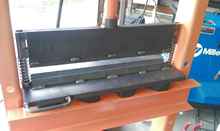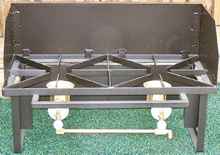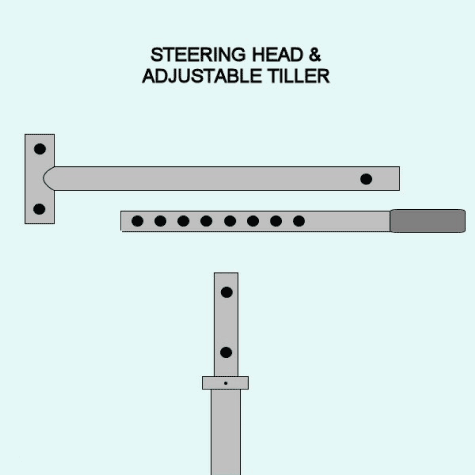Part One - Part Two
When it comes time to fashion the mounts for the leeboard and ladder I’ll need a small brake to bend the straps into a U shape. It has lots of other uses too. I found what I needed online but it was lightweight so I’ve decided to build my own to fit into my shop press like this:
Welding aluminum joints generally calls for welding on one side first then, using a circular saw, back-cutting half way through the joint before welding the other side. I modified this procedure to imitate the way professional aluminum boat builders treat the bottom to transom joint. I am calling it my version of the external chine log. It only extends out ¼”. It’s not a new idea; David Beede shows this design chine work in his PL Premium experiments at https://www.simplicityboats.com/pl_premium.htm
Suppliers often ship Aluminum sheets on a purpose built pallet which I used to build my assembly table by adding 2 x 4 legs.
Center Section
The center section is divided into a 35 gallon fresh water tank that uses dual hand pumps to access the water it contains, twin ice chests, a propane locker for a composite tank that fits right in and a small storage cabinet underneath my self-built dual burner cooker. Why twin ice chests? In the past I have carried two ice chests on week long cruises with one holding ice and beverages while the other holds dry ice to keep meat frozen until ready to thaw and cook. I can only stand so much Beef Stew. The ice chests are insulated but still help keep the water cold. Remember this is drinking water…not ballast. The largest body of water near me is Pamlico Sound where the water varies from salty to brackish to fresh so carrying drinking water is a good idea.
Cleaning out the water tank is simple…remove the manual pumps from both sides and insert a water hose into one. The overflow will clean and refresh the water supply. Add a cap full of bleach if you like.
Dual Burner Cooker
I found these on the internet made with mild steel and love them. For the boat I’ll use stainless steel and buy the burners and fittings from the same source. It won’t gimbal but, nosed up onto a beach, who needs that?
Finishing
No paint is needed for marine grade aluminum boats…even in salt water. I thought about not having a finish. I’d sand blast the boat to get rid of scratches and just even out the overall look but I have decided to paint it anyway. I’ll rent a commercial sand blaster from the local rent all place and buy the sand from them too. I’ll blast the inside first then turn it over and blast the exterior. After a good wash down, I’ll spray it with primer inside and out (but not inside the lockers etc.). After priming any old paint will do. Some go for high gloss enamel while others go for latex house paint. I choose the former and will tape it off to get an overall paint scheme but I could just go with battleship gray.
I have lots of experience with that. Lagniappe is intended for trailer sailing so no bottom paint but if it was needed they make special bottom paint for that.
There is no wood on my boat which makes it essentially maintenance free. When stored on its trailer behind my shop it will fill with rainwater, leaves and pine straw all of which can easily be swept out and hosed clean anytime I choose. Oh, I’ll keep a tarp over it or maybe build a carport for it but all that stuff will still find its way in.
No Electrical System
Individually battery powered LED running lights, hand held GPS & VHF, AM/FM radio, flashlights etc. is all l’ll use. Re-chargeable batteries and a solar powered charger will take over during the day. Around $50 bucks for the lights and the solar charger is about $20.00. Look for one that also charges cell phones etc.
Fittings and Setups
More Next Time...
Dan Roberts
Encore Tools & Equipment Inc.
Salisbury, NC
www.encoretool.com |













